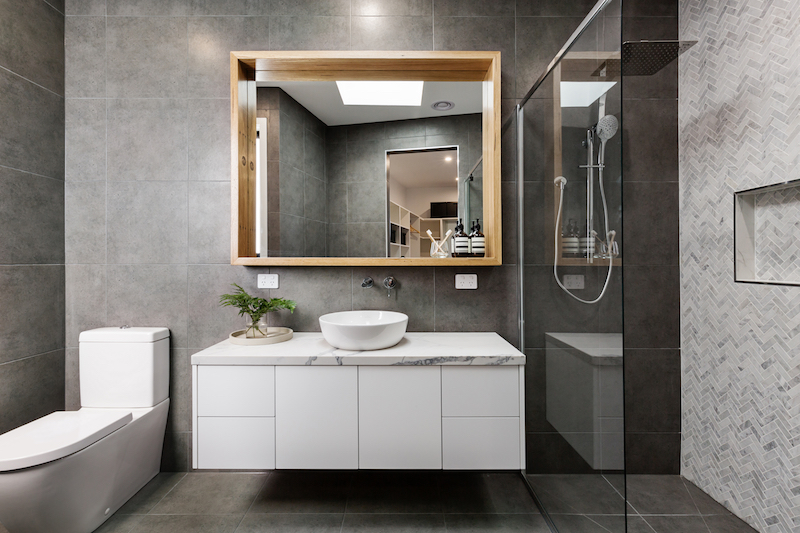Taking up a small portion of your home’s square footage, the bathroom is an area that you use on the regular. Within the small space, there is limited opportunity to add style, so when it comes to designing and choosing your fixtures you want to get it right the first time.
One of the first things that you notice when you walk into a bathroom is the vanity. The main function of the vanity is to conceal the plumbing underneath your sink, but the vanity also provides storage, a spot for your sink and serves to add style to your bathroom.
Due to its aesthetic importance, bathroom vanities are available in a variety of different styles and materials. Familiarize yourself with the different styles and materials used for bathroom vanities to help decide what is best for your home and budget.
Average Costs of Bathroom Vanities
Since there are so many materials and styles available for bathroom vanities, the price can vary quite a bit. The cost of an average bathroom vanity is between $200-$800. Depending on the size, material, and work involved however, it can range from $900-$1500 on average. The average rate for labour can be anywhere from $100-$150 per hour. The upside, with so many options, selecting the style, size, and material that suits your tastes and accommodates your budget is easy with the help of a pro.
Below are the average costs of Bathroom Renovation services across different cities in Canada:
| City | Average | Minimum | Maximum |
| Barrie | $9,816 | $100 | $50,000 |
| Calgary | $8,738 | $100 | $50,000 |
| Edmonton | $7,937 | $150 | $50,000 |
| Hamilton | $15,707 | $150 | $50,000 |
| Oshawa | $14,152 | $300 | $48,000 |
| Ottawa | $11,416 | $100 | $50,000 |
| Toronto | $9,486 | $100 | $50,000 |
| Vancouver | $8,983 | $123 | $50,000 |
*Costs based on 5095 verified Canadian homeowner reviews as of March 2022
Styles of Vanities
There are four main styles of bathroom vanities. Depending on the style you select, the installation cost will vary. Each style can be customized to fit your bathroom and consulting with a pro will ensure that you are maximizing your space to its full potential.
Built-In
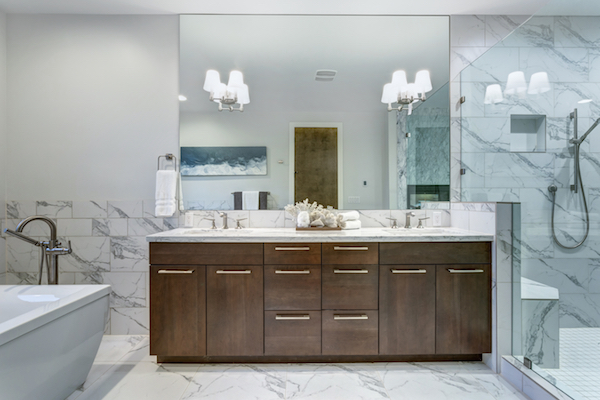
A built-in vanity is best used in a large space. Utilizing the space from wall to wall, this vanity fills the area nicely and provides the most storage. These vanities provide great stability and durability, which makes them a great option for busy households.
Since these units tend to be larger, they can make the room appear smaller. With no gap between the floor and fixture, this style makes it difficult to clean the floor, and while you may save on flooring as it is not needed under the vanity, if you decide to renovate, there will be a footprint left unfinished where the vanity used to sit-adding extra costs come reno time.
Pedestal
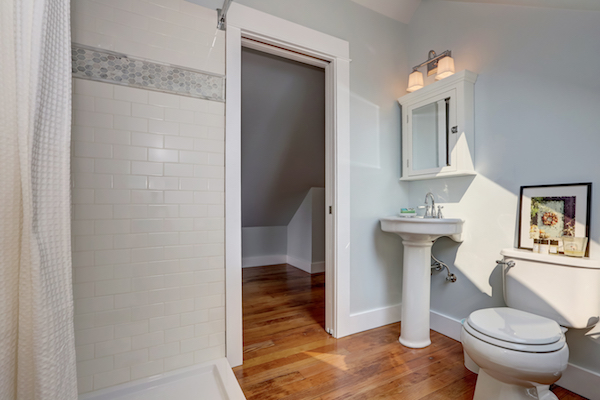
A pedestal vanity can work in any space, but is best in a bathroom where space is limited. Pedestal vanities give your space an airy open look compared to more bulky styles offered by cabinet vanities. Taking up limited space, the downside to a pedestal vanity is that there is no storage provided which is why they’re commonly seen in guest baths and powder rooms. A pedestal style vanity is the cheapest of the styles to install.
Freestanding
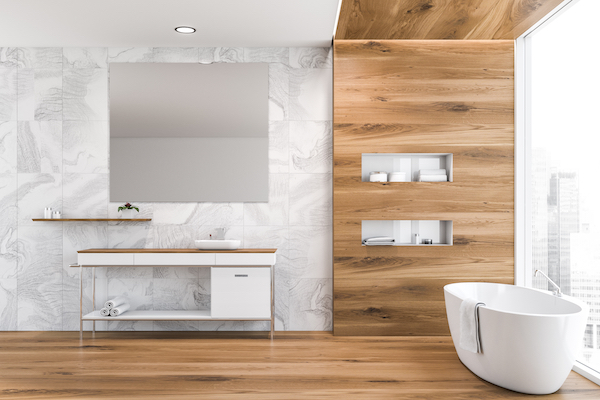
Freestanding vanities are set on their own legs and extends the room’s line of vision because the floor continues underneath the cabinetry versus being blocked by traditional vanities that extend right to the floor. Freestanding vanities provide a more modern look while still benefiting from the storage and hidden plumbing of a traditional vanity.
Wall Mounted
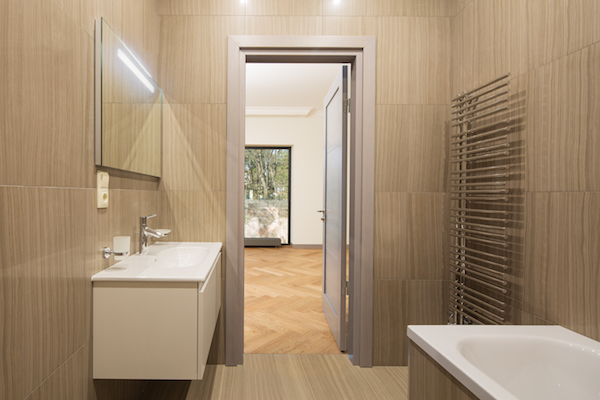
A wall mounted vanity, also referred to as a floating sink, is a very modern design. Leaving a gap of space between the vanity and the floor, this fixture creates an open feeling which gives the illusion of having more space. With a gap between the vanity and the floor, it makes it easy to clean underneath the vanity. Wall mounted vanities provide optimal room for storage and are able to hide plumbing fixtures. A wall mounted vanity is a more expensive style of vanity.
Vanity Materials
Luckily, the materials used for your bathroom vanity are the same materials that you can find in your kitchen. Tip: using the same, or leftover slabs from a kitchen reno (if possible) can help you save on costs.
Popular materials used for the countertop are quartz, marble, granite, and solid surface. Ranging anywhere from $15-$200 per square foot, there are benefits to each material. Read more about the pros, cons, and costs of countertop materials here.
Popular materials used for the vanity are melamine, polyester, lacquer, and wood. The price for your cabinets in your bathroom compared to your kitchen will vary quite drastically as the material needed is not nearly as much. Read more about the pros and cons of popular cabinet materials here.
Selecting a material for your vanity should be based on personal style and use. If there is going to be a lot of use, selecting a more durable material is best. Trust your personal style and consult a pro today to get your materials and kickstart your bathroom renovation!
Style Of Sinks
Your bathroom vanity isn’t complete without a sink. The average cost of installing a sink can range from $80-$300. The material used, most commonly, is ceramic and glass, which range from $80-$120 and $150-$300, respectively. Installing two sinks will raise the cost of your vanity.
Vessel
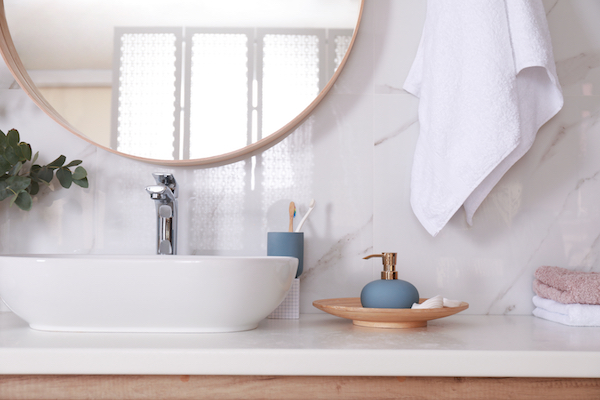
It is easier to install a vessel sink as it does not require a countertop cut out, rather just a small hole to accommodate the sink drain. Sinks which sit upon the counter allow for more storage beneath, however they are less stable and are more accustomed to chips as they are more exposed.
Undermount
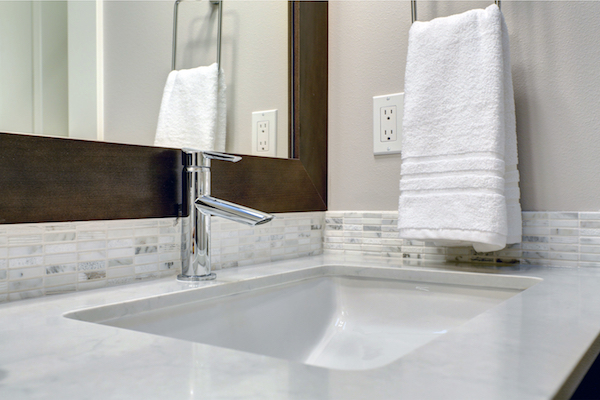
Undermount sinks require more work for installation as a countertop cutout is required making the installation more expensive. Undermount sinks take away from cabinet storage as the sink is sitting in the cabin of the vanity. This style is more durable and is less prone to chips and the sink is hidden.
Being equipped with all the knowledge of bathroom vanities, one can see that there is a variety available, allowing homeowners to completely customize to their own tastes all while accommodating their project budget. After weighing the pros and cons, talk with a pro today about your starting your next bathroom renovation.
Article updated June 2022.
